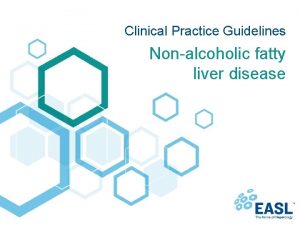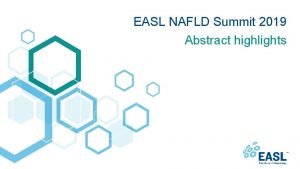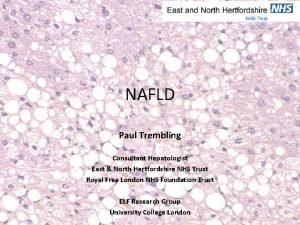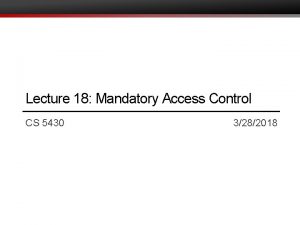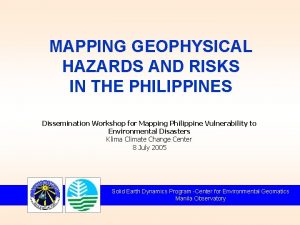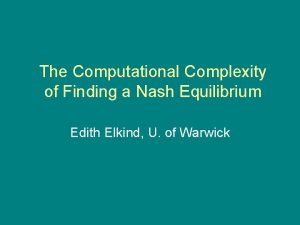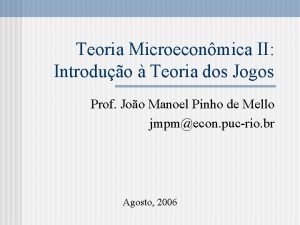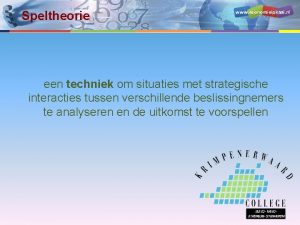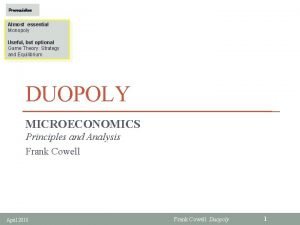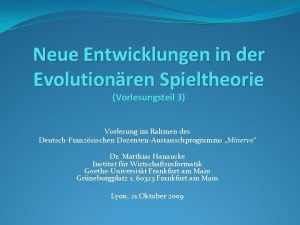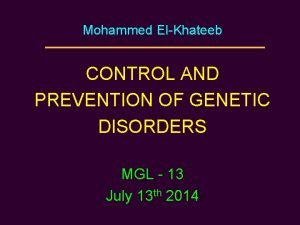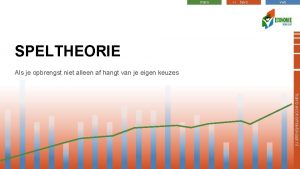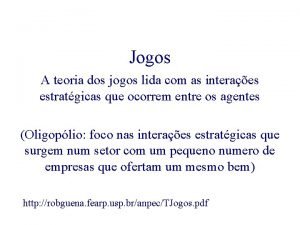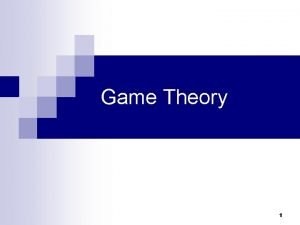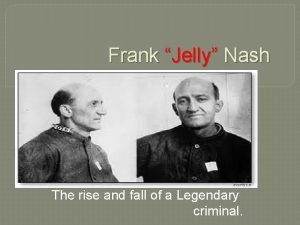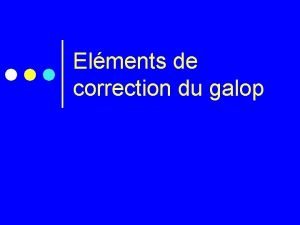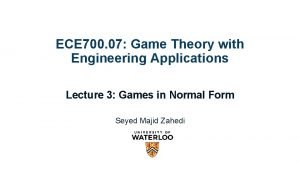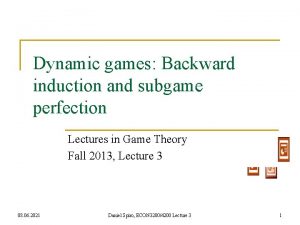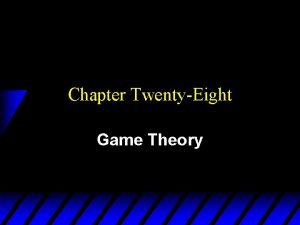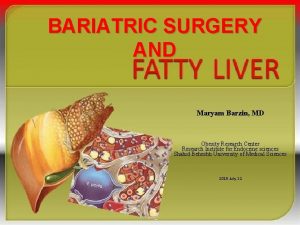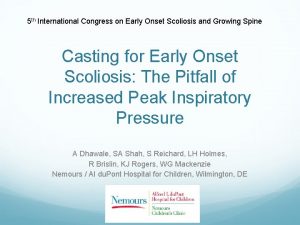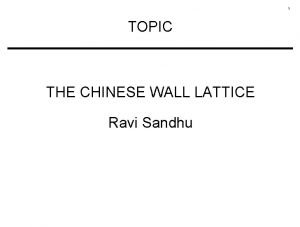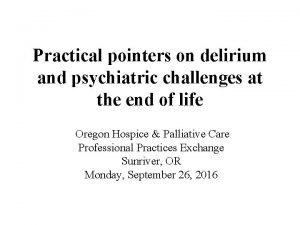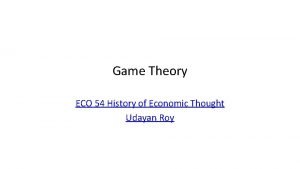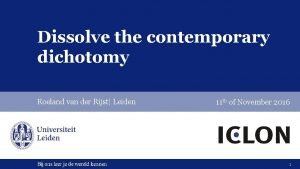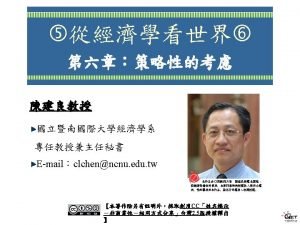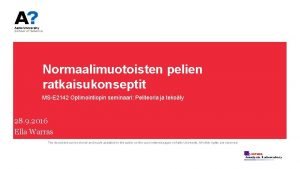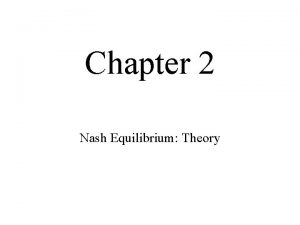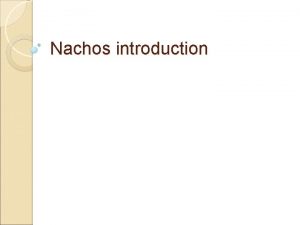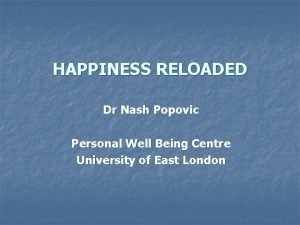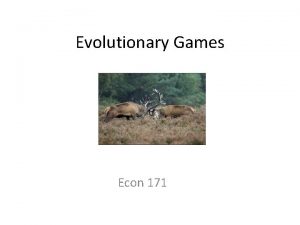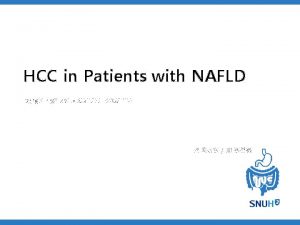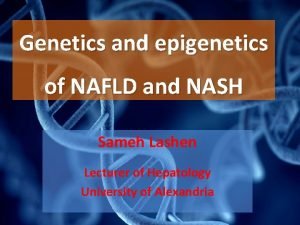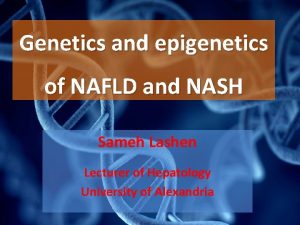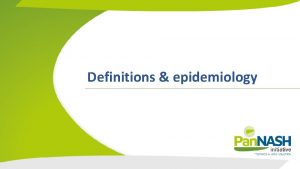NAFLD and NASH The next Tsunami in liver




























































- Slides: 60

NAFLD and NASH The next Tsunami in liver disease Are we ready? Mary Pat Pauly MD FACP AASLD Gastroenterology and Liver Disease Kaiser Permanente, Sacramento Clinical Professor of Internal Medicine and Gastroenterology, UC Davis

Case presentation • 68 yo man with HTN, presents for evaluation of mass lesion in liver – discovered incidentally while undergoing CT chest Dedicated liver CT ordered • 4 cm mass right lobe of the liver. • Enlarged hypoechoic liver • and normal spleen

CT Scan results Arterial phase – hyper enhancement Portal Venous phase “Wash out “ RED flags for HCC in appropriate clinical setting

• History – Retired office worker – No known RF for HCV, HBV – ETOH socially < 1 drink daily – No history of tobacco or other drugs No FH of cancer • Medical problems included HTN, HLP, pre -DM, – Voluntary weight loss 30 pounds – 12 months • Medications – Lisinopril and HCTZ • PE: BP 138/84, P 68, O 2 sat 98%, 104. 8 kg, BMI 28. 5 – No stigmata of liver disease – Heart –soft SEM and lungs – normal BS bilaterally – Abdomen: soft, obese, liver enlarged 2 cm down in RUQ--no appreciable spleen. – LE no edema

Laboratory work up • Basic – – – ALT 50, AST 62, Alk phos 158 Albumin 4. 0, INR 1. 0 CBC normal -plt 181, 000 Hepatitis serologies HBs. Ag HBc. Ab – HBs. Ab+ Anti HCV Ab – • • • Ferritin 501(elevated) SI /TIBC = 24% ANA negative Ceruloplasmin -normal. Tumor markers all negative – CEA= 1. 0, – AFP= 12. 3, – CA 19 -9 = 6

Biopsy: of the lesion and the surrounding liver – Biopsy of the mass lesion – HEPATOCELLULAR CARCINOMA, WELL TO MODERATELY DIFFERENTIATED – Uninvolved Liver biopsy – LIVER, CT-GUIDED BIOPSY: -CIRRHOSIS WITH MILD CHRONIC HEPATITIS, - MACROVESICULAR STEATOSIS » Iron stains – negative » PAS diastase – negative » Copper - negative

Hepatocellular Carcinoma in NASH: Second leading cause of HCC in US • 26% of HCC due to NASH – This number is increasing yearly. “hidden cause of hepatocellular Carcinoma” Many undiagnosed , can be seen without cirrhosis – 48% of 87 with NAFLD assoc HCC in NE UK were NOT cirrhotic** • HCC in cryptogenic cirrhosis • Many with RF for NASH, suspect “burnt out NASH” * Younossi Z EASL 2015 ** Christopher Paul Day EASL April 26, 2013

NAFLD and NASH Objectives. • Discuss the prevalence of NAFLD in the world • Discuss the natural history of the NAFLD and NASH • Discuss the pathogenesis of the NAFLD and NASH. • Discuss methods of differentiating NAFLD and NASH. • Discuss clinical presentation of NAFLD • Discuss current management and treatment options

Prevalence of NAFLD • Most commonly diagnosed cause of chronic liver disease In Europe and US. • Prevalence: – 30% in US* • 10% of children in US – 6 -35% worldwide*** – Even up to 35% in older populations**** *Younossi ZM Clin Gastro Hep 2011; 9: 524 -30 **NIDDK website ***Vernon G et al Alim p. Harmaco Ther 2011; 34: 274 -85 ****Koehler EM J Hepatol 2012; 57; 1305 -11

NASH Fastest growing cause of cirrhosis • Number of transplants performed for NASH increasing • At two major transplant centers – Mayo 1% in 2001 ->10% in 2009 – UCLA 2% in 2002 ->25% currently – Slated to surpass HCV as leading cause for liver transplant in 2020 **UCLA and *Mayo Clinic data

FATTY LIVER DISEASE: History • Late 1800’s – Association between fatty liver and cirrhosis – –First recognized --Pathologist’s observation • 1970’s -Problem after Jejunoileal bypass • 1980 -“Non. Alcoholic Steato. Hepatitis” Dr. J Ludwig • Steatohepatitis in the absence of significant alcohol consumption (currently thought to be) : – 20 g/day in females – 30 g/day in males • And in the absence of known secondary clinical conditions

Steatosis and Steatohepatitis: known secondary causes • Drugs and Toxins – – – Corticosteroids Methotrexate amiodarone Tamoxifen nifedipine • Viral Hepatitis – HCV • Other – Wilson’s disease, – bacterial overgrowth, cachexia, – sepsis, IBD • Nutritional Disorders – Obesity – J-I bypass – TPN – Malnutrition • Metabolic disorders – Galactosemia, tyrosenemia • Inherited disorders of lipoprotein metabolism – Lypodystrophy – Abetalipoproteinemia • Genetic defects – PPARGC 1 a – PNPLA 3

Spectrum of disease NAFLD NAFL 1. 2. 3. 4. More than 5% fat in liver No inflammation or fibrosis Benign / usually not progressive 10 – 20% of Americans NASH 1. Fatty liver with inflammation +/fibrosis 2. At risk for progression to cirrhosis and Liver Cancer 3. 2 -5% of Americans

NAFLD • Risk factors – – – – Obesity* Metabolic syndrome Type II diabetes* Triglycerides HTN Low HDL cholesterol Age ? gender


Obesity Trends* Among U. S. Adults BRFSS, 1990, 1998, 2006 (*BMI 30, or about 30 lbs. overweight for 5’ 4” person) 1998 1990 2006 No Data 29% <10% ≥ 30% 10%– 14% 15%– 19% 20%– 24% 25%–

Obesity trends in USA 60% of US adults are overweight

Surveys from 1999 - 2009 Data from WHO global database Copyright © 2012 -2015 Obesity HQ

NAFLD: Prevalence in Children and Adolescents • Australian study* – 1170 adolescents • Ultrasound diagnosis • Prevalence of NAFLD = 12. 8% • Strong association with adiposity • 36 children with NASH – (<12 yo) – “Abn LFTs” or “Abn US • 30/36 obese” – 24 underwent biopsy *Koehler et al J Hepatology 2012 **Rashid M et al. JPed Gastro 2000; 30: 48 -53 • 17/24 fibrosis • 1/24 cirrhosis

Childhood obesity on the rise • Over 42 million obese children <5 years old Close to 31 million of these are living in developing countries. Overweight and obese children --likely to stay obese into adulthood --more likely to develop diabetes and cardiovascular diseases at a younger age “One of the most serious global public health challenges of the 21 st century. ” WHO Global database - 2013

The NAFLD Tsunami

NASH can rapidly progress to cirrhosis --15% over 5 years

NASH ->Increased Mortality NASH is associated with • Increased all cause mortality • Increased mortality from liver disease (2. 8% vs 0. 2%) * • Increased mortality from cardiovascular disease (15. 5% vs 7. 5% )* “steatosis” – usually benign • no difference in mortality – 129 NAFLD pts followed up 13. 7 years *P=0. 04 for both Ekstedt M et al HEPATOLOGY 2006; 44: 865 -873.

What determines progression from NAFLD -> NASH? NORMAL LIVER Environmental factors Genetic factors 1 st HIT Insulin resistance Fat accumulation in liver STEATOSIS Stellate cells activated 2 nd HIT oxidative stress, . Lipid peroxidation INFLAMMATION & FIBROSIS

NAFLD -> NASH • Suggested dietary factors that may contribute – Total saturated fats • Fructose • The liver gut axis is important – role of microbiomes • Genetic factors – PNPLA 3 – Other • Obstructive Sleep apnea Night time hypoxemia Zhu et al Hepatology 2013

NAFLD -Presentation • NAFLD – Common diagnosis in patients with “incidental abnormal LFTs” • 26% of those presenting to primary care physicians* – 60 -70 % of those presenting to specialists • However, most with NAFLD • Normal liver function tests. ** *Armstrong et al J Hepatology 2012 **Wong et al 2013

NAFLD ->Signs and symptoms • Most are asymptomatic 50 -100% • Right upper quadrant pain 30% • Fatigue, weakness, malaise 30% • Physical examination – Normal 20 – 30% – Large liver up to 80% – Signs of portal hypertension <10% • And some with NAFLD present with HCC

NAFLD -> Laboratory Abnormalities • Liver enzymes – ALT > AST * • 2 -3 x normal • Alkaline Phosphatase – Normal or < 2 x normal. • Ferritin may be elevated • up to 5 x normal In patients with cirrhosis there may be reversal of the ALT/AST ratio

Optional • US: • Ultrasound “hyperechoic” liver • diffuse fatty infiltration.

NAFLD -- diagnosis Normal CT Liver = spleen Steatosis Severe fatty infiltration; liver<spleen Liver<spleen Fatty infiltration results in a decrease in attenuation (Houndsfield units) <40 HU consistent with fatty infiltration sensitivity 75 -80% (increases with increasing risk factors) ** IV contrast not needed for this determination ** allows evaluation of the contour of the liver (ie nodularity consistent with cirrhosis)

Who to evaluate ? • High index of suspicion – in obese patients with metabolic syndrome – Persistently unexplained abnormal AST, ALT or Alk phos – Persistently unexplained hepatomegaly – Abnormal hepatic imaging • suggestive of NAFLD • Exclude other causes of liver disease – Especially viral hepatitis and alcohol – Women >20 gms /d – Men >30 gms /d • Others………

NAFLD: what we need to know? ? • Is it NAFL or NASH? • If NASH, – How much fibrosis? • Biopsy is still “gold standard” • Invasive – Up to 1% incidence of bleeding – Possiblity of death

NASH HISTOLOGY NASH: H and E stain, steatosis, swollen hepatocytes, inflammation, bridging fibrosis NASH: Trichrome stain: pericellular fibrosis and bridging fibrosis Cirrhosis: wide frbrous bands and nodularity

Stages of fibrosis

Non Invasive markers of fibrosis • Clinical • signs of portal hypertension • and laboratory data – ALT, AST, platelets – INR, albumin • Serum tests – APRI – FIB-4 – NAFLD fibrosis score • Shear wave elastography Fibroscan

http: //www. hepatitisc. uw. edu/page/clinical-calculators/fib-4 < 1. 45 => no advanced fibrosis > 3. 25 => cirrhosis Source: Sterling RK, Lissen E, Clumeck N, et. al. Hepatology 2006; 43: 13171325

APRI: AST to Platelet Ratio AST level ( / ULN ) APRI = X 100 Platelet count (10 ( 9) /L ) --------------------------------------------------------- Example 2. 0 = 60 / 40 X 100 Ø 1. 5 - 2. 0 => cirrhosis Ø < 0. 5 no adv fibrosis Wai CT et al. Hepatology 2003; 38: 518 - 26

NAFLD Fibrosis Score NAFLD SCORE VALUE High degree of accuracy < -1. 455 No advanced fibrosis > 0. 676 Advanced fibrosis • The regression formula for prediction of severity of fibrosis : • • -1. 675 + 0. 037 x age ( yrs) + 0. 094 x BMI (kg/m 2) + 1. 13 IFG / Diabetes ( yes=1, no = 0) + 0. 99 x AST/ALT ratio - 0. 013 (x plt x 10(9)/L ) – 0. 66 x albumin ( g/l) http: //www. nafldscore. com/ Angula et al Hepatology 2007; 45 : 846 -53

Liver Fibrosis in NASH: Fibroscan with XL probe vs liver biopsy Yoneda et al Dig Liv Dis 2008; 40: 371 -8

Non invasive markers of Fibrosis in NASH Sebastiani G, Alshaalan R, Wong P, Rubino M, Salman A, Metrakos P, et al. (2015) Prognostic Value of Non-Invasive Fibrosis and Steatosis Tools, Hepatic Venous Pressure Gradient (HVPG) and Histology in Nonalcoholic Steatohepatitis. PLo. S ONE 10(6)

…………. We still need clinically useful validated NASH fibrosis markers with PPV >90% so we know • who to screen for HCC • Who needs treatment

Treatment

NASH Treatment: • Therapies directed at obesity / metabolic syndrome • #1 --Life style changes – Weight loss and exercise • Improves steatosis and inflammation – Weight loss 7 -9%* necessary – Life style intervention >> education alone • ongoing motivation – Diet, exercise and behavioral modification Promrat. K, et al Hepatology 2010; 51(1) 121

NASH Treatment – Bariatric surgery* • 21 studies – 18 improved steatosis – 11 decreased inflammation – 6 improved fibrosis – 4 worse fibrosis *AASLD “Insufficient evidence to recommend as primary treatment for NASH” Chavez-Tapia NC et al Cochrane Database systemic review 2010

Treatment: Insulin sensitizers / GLP-1 agonists – Metformin – No evidence for benefit in NASH • But emerging evidence of anti – cancer effect – 62% decrease in HCC in diabetics on metformin* – GLP 1 agonists – liraglutide** • Decreased ALT and steatosis – associated with weight loss *Chen HP et al. Gut 2013 ; 62; 606 -615 **Yuiciero E et al Hepatology 2015; 45: 269 -78

Treatment-statins – Statins • Definitely safe • Dramatic decrease in HCC in pts with DM II on statins – OR 0. 63 ( 0. 5 – 0. 8)* • Less severe NASH in dyslipidemics on statins • Even improved LFTs in some cases *El Serag et al Gastro 2009; 136: 1601 -8 **Basaranoglu M J Hepatol 1999; 31(2)384

What about coffee? • Coffee – Less fibrosis associated with increased coffee caffeine consumption • Less fibrosis associated with >7 cups of coffee per week Molloy JW et al Hepatology 2012; 55: 429 -36

PIVENS Trial Pioglitazone, Vitamin E or placebo for NASH? – Largest trial so far • 247 adults with NASH – RCT for 96 weeks • Vitamin E 800 u daily vs • Pioglitazone 30 mg daily vs • Placebo – Liver biopsy at entry and exit – Primary outcome was improvement in histology Sanyal AJ et al. NEJM 2010, 362: 1675 -85

PIVENS Trial Vitamin E Improvement Steatohepatitis Pioglitazone * 43% 34% Improvement Histology 52% 47% placebo P value 19% 0. 01 19% 0. 04 23% 0. 001 23% 0. 002 No difference in fibrosis score *Pioglitazone associated with weight gain 4. 7 kg over course of study Sanyal AJ et al. NEJM 2010, 362: 1675 -85

What about empiric treatment with vitamin E? • Some will recommend it, but …. . – 50% will not respond to vitamin E • LFTs not reliable way to assess response – Vita E associated with • Increased all cause CV death • Increased risk Hemorrhagic Stroke • ? ? Effect on Prostate cancer – Long term safety needs to be determined

Obeticholic acid • Semi synthetic bile acid analog – (6 alpha – chenodeoxycholic acid) • Potent activator of Farnesoid X receptor – Reduces liver fat • Decreases Hepatic TG – Increases insulin sensitivity – Decreases markers of inflammation

FLINT trial* • Obeticholic Acid – 25 mg OCA daily vs placebo – RCT multicenter , phase IIb – 72 weeks of treatment – 283 adults – Liver biopsy at beginning and end of trial • NAFLD Activity score >4 – Primary endpoint – histologic improvement • No worsening in fibrosis and improved NAS >2 * Farnesoid X nuclear receptor ligand obeticholic acid for noncirrhotic, non-alcoholic steatohepatitis (FLINT): a multicentre, randomised, placebo-controlled trial Neuschwander-Teri et al Lancet 2015 march 14 -20 pg 956 -65

FLINT trial: Effects of Obeticholic acid on histology OCA 25 mg daily placebo 46% 21% Fibrosis improvement 35% 19% 0. 01 Hepatocellular ballooning 46% 31% 0. 03 Lobular steatosis 61 38 0. 001 Lobular inflammation 53 35 0. 007 NASH resolution 22% 13% 0. 08 Primary Endpoint P value Secondary endpoints Improved histology , NAS decrease > 2, No increase in fibrosis Neuschwander-Teri et al Lancet 2015 march 14 -20 pg 956 -65

FLINT TRIAL safety and tolerability • Adverse events – Pruritis • higher in treatment group – 23% vs 6% • Moderate • Only one persons discontinued the medication because of pruritis – No difference in other AEs Neuschwander-Teri et al Lancet 2015 march 14 -20 pg 956 -65

Other possibilities …. . • Lipid-lowering medications – Clofibrate • Known to decrease TG in alcohol-fed rats • Trial -- no change in steatosis or fibrosis – Gemfibrozil • Short trial of 600 mg/d -Decrease in transaminases; no histology reported--Independent of entry TG level • Ursodeoxycholic acid – One randomized placebo-controlled trial – 126 pt-No difference in fibrosis, or inflammation • ? LOXL 2 Inhibitor – Anti fibrotic- ihibitis cross-linking collagen--Clinical trial ongoing

Management Algorithm for NAFLD Persistently elevated LFTs no Rule out other causes of liver disease Obese and Metabolic syndrome Probably NAFLD Diet, exercise, no ETOH, rx HTN, DM, HLP. Follow labs – AST, ALT AP Bili, plt, INR, NAFLD score < -1. 455, APRI <0. 5 Fib-4 < 1. 45 - Reassure - Continue diet, exercise Yes Proceed with work up and rx no Consider alternate diagnosis Consider biopsy cirrhosis Suspicion of adv fibrosis or cirrhosis Surveillance for HCC

Summary: 1. NAFLD is increasing in prevalence all over the world – This is true in children and adolescents and elderly 2. Obese patients with DM and metabolic syndrome are high risk for NASH 3. The incidence of liver failure and hepatocellular carcinoma in patients with NASH is increasing – HCC can occur in cirrhosis and non –cirrhotic NASH – Patients with cirrhosis and advanced fibrosis need to be screened for HCC 4. NASH contributes directly to cardiovascular and liver related morbidity and mortality 5. Current non invasive methods of disease staging can help identify those patients at each end of the spectrum.

Summary treatment: 1. Weight loss and exercise are first line treatment – Lifestyle advice should be emphasized for all – Motivation will be key 2. In patients with NASH and Diabetes – Suggest Metformin and TZD • Metformin especially for its anti cancer effects 3. Low threshold for statin • Decreased incidence of cancer also 4. For those with NASH only – vitamin E is an option for therapy – Obeticholic acid may be option in near future – Newer treatments are in evolution or in clinical trials

Dessert for the person with cirrhosis • Potent anti-oxidants – Vitamin C • Increased NO which has been associated with improved liver function – Dark chocolate • Decreased post prandial elevation of portal pressure – Coffee • Decreased progression of fibrosis Freedman ND et al Hepatology 2009 Hernandez-Guerra M et al Hepatology 2006 Gottardi et al EASL April 15 2010

 Non-alcoholic fatty liver disease (nafld)
Non-alcoholic fatty liver disease (nafld) X.next = x.next.next
X.next = x.next.next Nafld summit 2019
Nafld summit 2019 Nafld
Nafld Nafld
Nafld Brewer and nash model
Brewer and nash model To my valentine by ogden nash questions and answers
To my valentine by ogden nash questions and answers Basilan and romblon tsunami
Basilan and romblon tsunami Nash evenwicht
Nash evenwicht Pure-strategy nash equilibria
Pure-strategy nash equilibria Equilibrio de nash
Equilibrio de nash Equilibrio pareto efficiente teoria dei giochi
Equilibrio pareto efficiente teoria dei giochi Nash-evenwicht
Nash-evenwicht Cournot nash equilibrium
Cournot nash equilibrium Nash gleichgewicht
Nash gleichgewicht Adam nash (savior sibling)
Adam nash (savior sibling) Nash evenwicht
Nash evenwicht Contoh lafadz zhahir
Contoh lafadz zhahir Equilibrio de nash
Equilibrio de nash Joan nash
Joan nash équilibre de nash
équilibre de nash Game theory cartoon
Game theory cartoon Define optimal strategy in game theory
Define optimal strategy in game theory Game theory example
Game theory example Frank jelly nash
Frank jelly nash Equilibrio di nash
Equilibrio di nash Theorie de nash
Theorie de nash Equilibrio de nash ejemplos resueltos
Equilibrio de nash ejemplos resueltos Nash-evenwicht
Nash-evenwicht Bertrand competition
Bertrand competition Subgame perfect nash equilibrium
Subgame perfect nash equilibrium Adam nash designer baby
Adam nash designer baby Pure-strategy nash equilibria
Pure-strategy nash equilibria Ad1p
Ad1p Nash-sutcliffe efficiency
Nash-sutcliffe efficiency Nash's pyramid
Nash's pyramid Pill concocter
Pill concocter A beautiful mind psychological disorder
A beautiful mind psychological disorder Nash moe
Nash moe Brewer-nash model (chinese wall)
Brewer-nash model (chinese wall) Volledige mededinging voorbeeld
Volledige mededinging voorbeeld Harvey nash hanoi
Harvey nash hanoi Nash-evenwicht
Nash-evenwicht Nash delirium
Nash delirium John nash non cooperative game theory survivor
John nash non cooperative game theory survivor Roeland van der rijst
Roeland van der rijst Assamad nash
Assamad nash Assamad nash
Assamad nash Debra engelhardt-nash
Debra engelhardt-nash John forbes nash
John forbes nash Dominoiva strategia
Dominoiva strategia Prisoner's dilemma nash equilibrium
Prisoner's dilemma nash equilibrium Nash
Nash Nach os
Nach os Doyle v white city stadium
Doyle v white city stadium Ogletree, deakins, nash, smoak & stewart, p.c.
Ogletree, deakins, nash, smoak & stewart, p.c. Nash equilibrium prisoners dilemma
Nash equilibrium prisoners dilemma John charles martin nash şizofreni
John charles martin nash şizofreni Dr predrag popovic
Dr predrag popovic Extensive games with imperfect information
Extensive games with imperfect information Pure strategy nash equilibrium example
Pure strategy nash equilibrium example
